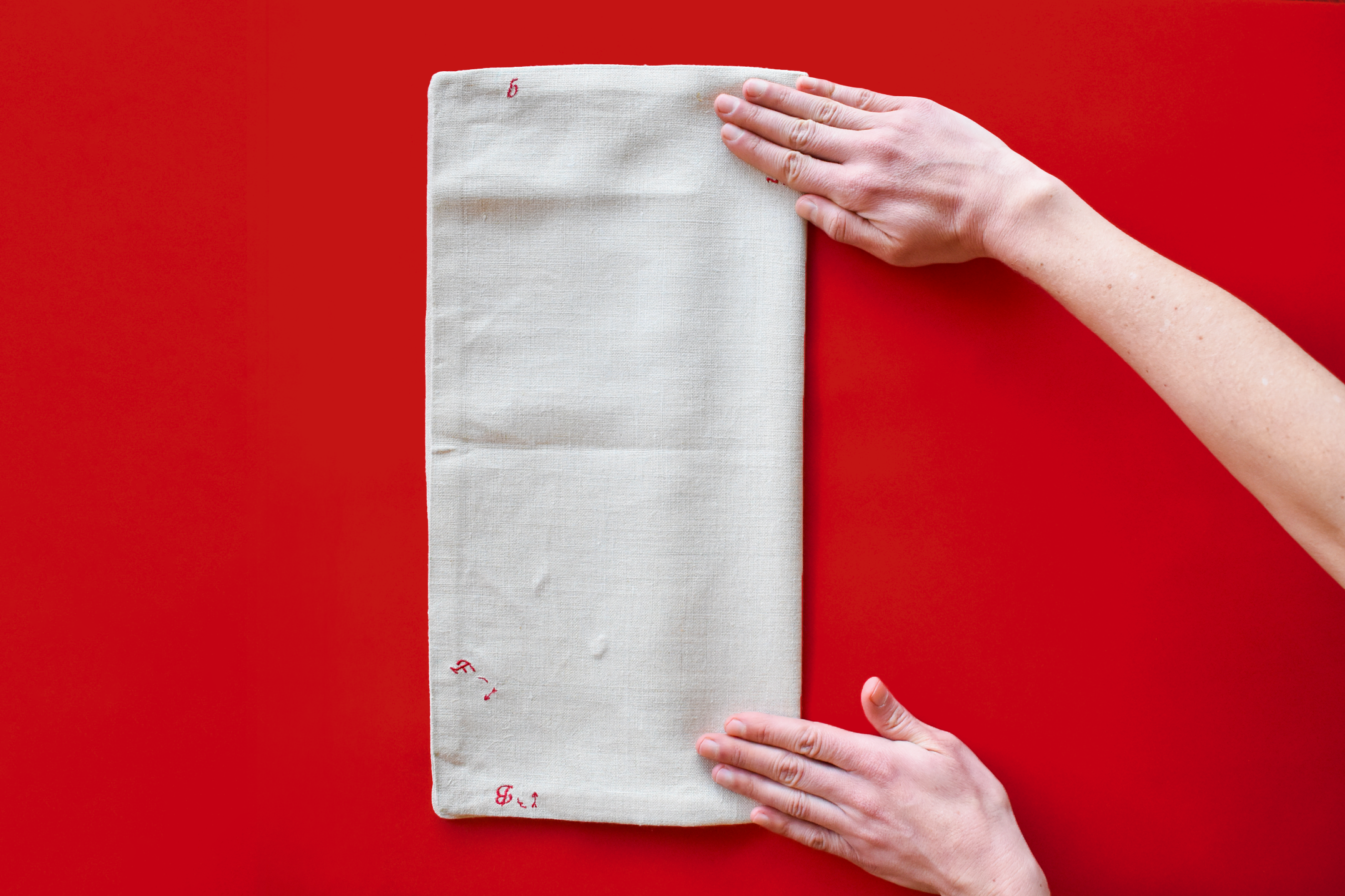[Align]
Flax has been a central crop in Western Europe for centuries. However, the production of the fiber has gradually shifted to other parts of the world, posing a threat to the local producers and the heritage of what once was a flourishing industry. Through an exploration of the physical quality of creasing―one of linen's most apparent and controversial properties―‘Align’ aims to increase the use of flax and linen and raise its value in contemporary culture.

Although highly durable and sustainable, today flax is only 1% of the entire global textile industry. Looking at the vast vanishing tradition of flax and linen, the project is seeking to raise the value of the fiber in contemporary culture. Using traditional elements and skills, the project explores the potential of creases―from structured and controlled lines to unexpected wrinkles.
Famous for its whiteness—in the past linen was marked and decorated with embroidery monograms and ornaments to personalize and increase the value of each item. Whereas used in the past as a solely decorative element, ‘Align’ proposes the use of embroidery as a functional element; In a linen napkin, embroidered letters give users folding instructions—a physical ‘how to’—following a traditional folding technique. On a linen shirt, the embroidery is used as a structural element, emphasizing the fold lines and directing the act of folding—celebrating the unique texture of the textile.
Famous for its whiteness—in the past linen was marked and decorated with embroidery monograms and ornaments to personalize and increase the value of each item. Whereas used in the past as a solely decorative element, ‘Align’ proposes the use of embroidery as a functional element; In a linen napkin, embroidered letters give users folding instructions—a physical ‘how to’—following a traditional folding technique. On a linen shirt, the embroidery is used as a structural element, emphasizing the fold lines and directing the act of folding—celebrating the unique texture of the textile.








Throughout history, people have been trying to hide wrinkles, fighting to conceal the natural characteristics of linen. To further explore the range of wrinkles, a pleated linen curtain was dipped in red dye while folded. Unfolded, the curtain reveals a striped red pattern following its fold lines. In contrast, the wrinkles of a linen towel were traced with embroidery—transforming the creases into a decorative element and celebrating the lines instead of avoiding them.


